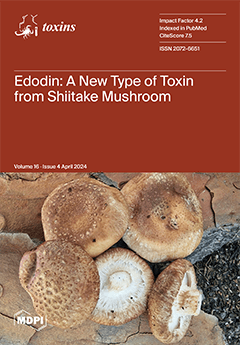The evolutionary interplay between predator and prey has significantly shaped the development of snake venom, a critical adaptation for subduing prey. This arms race has spurred the diversification of the components of venom and the corresponding emergence of resistance mechanisms in the prey and predators of venomous snakes. Our study investigates the molecular basis of venom resistance in pythons, focusing on electrostatic charge repulsion as a defense against α-neurotoxins binding to the alpha-1 subunit of the postsynaptic nicotinic acetylcholine receptor. Through phylogenetic and bioactivity analyses of orthosteric site sequences from various python species, we explore the prevalence and evolution of amino acid substitutions that confer resistance by electrostatic repulsion, which initially evolved in response to predatory pressure by
Naja (cobra) species (which occurs across Africa and Asia). The small African species
Python regius retains the two resistance-conferring lysines (positions 189 and 191) of the ancestral
Python genus, conferring resistance to sympatric
Naja venoms. This differed from the giant African species
Python sebae, which has secondarily lost one of these lysines, potentially due to its rapid growth out of the prey size range of sympatric
Naja species. In contrast, the two Asian species
Python brongersmai (small) and
Python bivittatus (giant) share an identical orthosteric site, which exhibits the highest degree of resistance, attributed to three lysine residues in the orthosteric sites. One of these lysines (at orthosteric position 195) evolved in the last common ancestor of these two species, which may reflect an adaptive response to increased predation pressures from the sympatric α-neurotoxic snake-eating genus
Ophiophagus (King Cobras) in Asia. All these terrestrial
Python species, however, were less neurotoxin-susceptible than pythons in other genera which have evolved under different predatory pressure as: the Asian species
Malayopython reticulatus which is arboreal as neonates and juveniles before rapidly reaching sizes as terrestrial adults too large for sympatric
Ophiophagus species to consider as prey; and the terrestrial Australian species
Aspidites melanocephalus which occupies a niche, devoid of selection pressure from α-neurotoxic predatory snakes. Our findings underline the importance of positive selection in the evolution of venom resistance and suggest a complex evolutionary history involving both conserved traits and secondary evolution. This study enhances our understanding of the molecular adaptations that enable pythons to survive in environments laden with venomous threats and offers insights into the ongoing co-evolution between venomous snakes and their prey.
Full article






